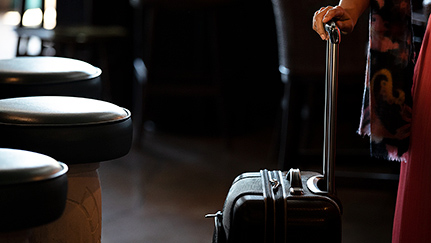
The Transportation Security Administration’s online list of prohibited items goes into voluminous detail about what you can take on a plane, what can be checked and what has been banned completely.
Carry-on restrictions include the obvious: weaponry or anything that could be used as such. But passengers are less certain about liquids, pastes and gels. Learn more about TSA carry-on rules below.
Liquids
TSA carry-on rules state that carry-on liquids cannot exceed 3.4 ounces (100 milliliters), and that applies not just to watery liquids but to pastes (such as toothpaste), spreads (including peanut butter) and gels (such as hair gels). Why 3.4 ounces? Because lab tests have shown that’s the limit beyond which an explosive (disguised as a foodstuff or toiletry) could cause serious damage. Carry-on liquids should be limited to what can be packed in a transparent one-quart zip-lock bag, the TSA says.
There are important exceptions to the liquids rule, however. Exempt liquids include medications, baby formula and breast milk. You may want to notify a TSA officer of their existence as you enter the screening area.
Sharp objects
The TSA permits a few small sharp objects to be carried no, including nail clippers and disposable razors, but apart from these, if an object has a blade or can cut, you should not take it on the plane with you.
Check your bags carefully
Don’t end up having to throw something out at the gate. Confiscation of banned items that passengers forgot they had in their carry-on luggage or didn’t realize fell into the category of a liquid can sometimes elicit grumbling. The large trash cans in the screening area regularly hold any number of new, high-priced bottles of perfume, unopened drinks and cosmetics that exceed the 3.4-ounce limit. Items like gel-based heating and cooling pads can end up in the trash containers too, since many people forget that these contain gels. At the holidays, small snow globes are allowed past screening (but not large ones).
The TSA’s list of prohibited items includes 95 categories of objects. However, even beyond the list of carry-on restrictions, TSA officers have broad discretion about whether an item is allowed through a checkpoint: “Even if an item is generally permitted, it may be subject to additional screening or not allowed through the checkpoint if it triggers an alarm during the screening process, appears to have been tampered with, or poses other security concerns,” the TSA says.
To ensure absolute security in the cabin of a plane, TSA agents sometimes use random screening techniques, “regardless of whether an alarm is triggered,” the TSA notes.
Serious violations of the carry-on rules can lead to fines and criminal referral.
If you have any doubts about an item you plan to carry on, check the TSA’s online list ahead of time. And before you leave home, check your baggage one last time.
While you’re making sure your carry-on items adhere to TSA restrictions, it’s also a good idea to think about covering yourself from the unexpected during your trip with travel insurance. Learn more about how Nationwide’s trip insurance can give you peace of mind while travelling.
Product, coverage, discounts, insurance terms, definitions, and other descriptions are intended for informational purposes only and do not in any way replace or modify the definitions and information contained in your individual insurance contracts, policies, and/or declaration pages from Nationwide-affiliated underwriting companies, which are controlling. Such products, coverages, terms, and discounts may vary by state and exclusions may apply.
The information included here is designed for informational purposes only. It is not legal, tax, financial or any other sort of advice, nor is it a substitute for such advice. The information may not apply to your specific situation. We have tried to make sure the information is accurate, but it could be outdated or even inaccurate in parts. It is the reader’s responsibility to comply with any applicable local, state or federal regulations. Nationwide Mutual Insurance Company, its affiliates and their employees make no warranties about the information nor guarantee of results, and they assume no liability in connection with the information provided. Nationwide and the Nationwide N and Eagle are service marks of Nationwide Mutual Insurance Company. © 2024 Nationwide